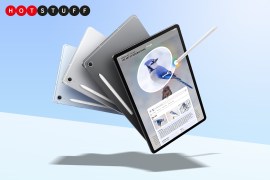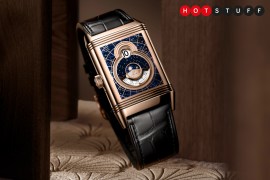Samsung Galaxy Watch review – in pictures
A bold new name and improved features makes this the best smartwatch for Android fans
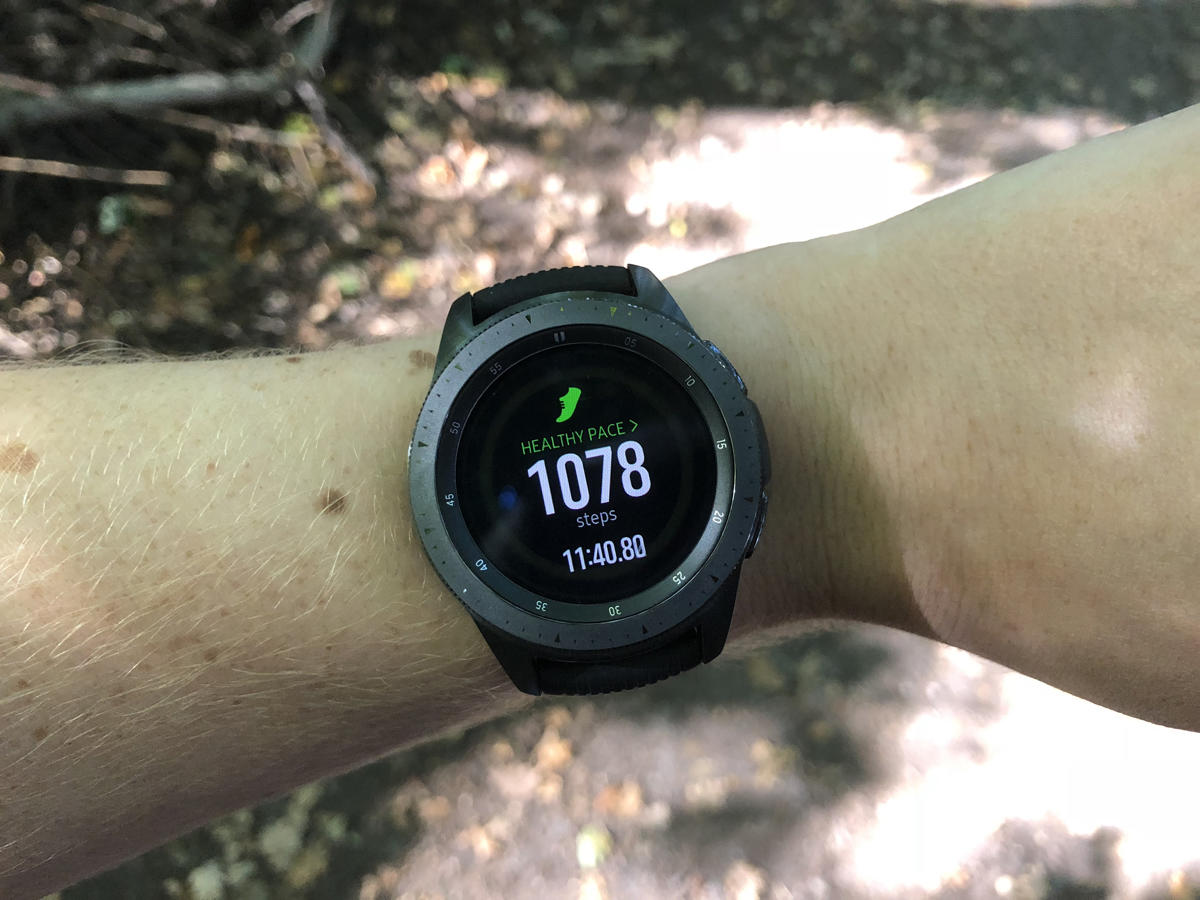
WATCH THIS SPACE
This year, Samsung has decided that not only is a new smartwatch in order, but so is a new brand name, and thanks to that, the rebranded Galaxy Watch (R.I.P. Samsung Gear) now feels much more in keeping with Samsung’s mobile offering. But does its bold new name have a new design and raft of upgraded features to match? And how does the Galaxy stand up against the mounting competition from the likes of Apple, Fitbit and an army of Wear OS smartwatches?
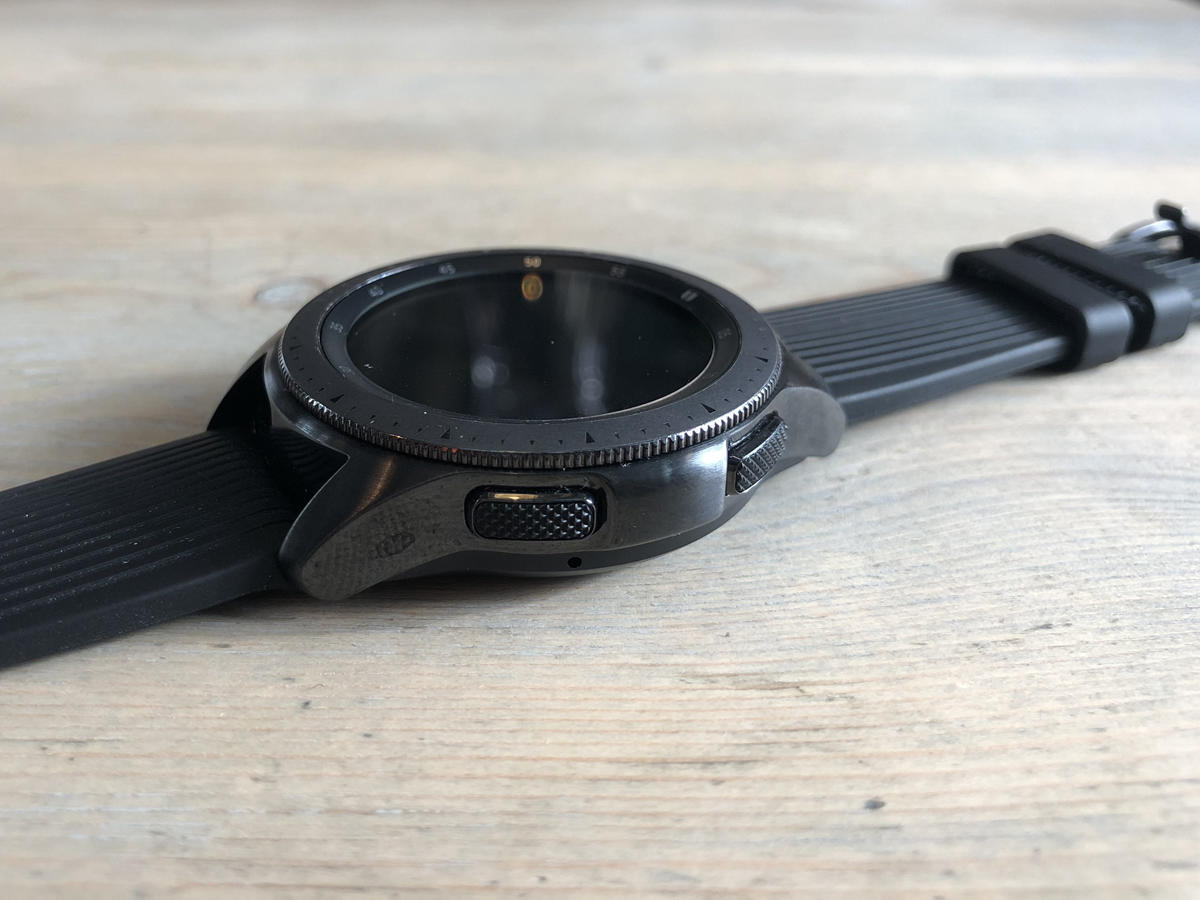
LITTLE OR LARGE
Unlike Samsung’s previous smartwatches, the Galaxy Watch comes in two sizes. There’s a 42mm model (£279) that weighs 49g and a 46mm model (£299) that weighs 63g. The fact the smaller model comes in rose gold tends to suggest it might be aimed at women. But at the same time, it’s a much more comfortable fit for wrists of all sizes than its bulkier counterpart and also comes in a midnight black shade. In contrast, the bigger, 46mm model comes in just a black and silver combination finish. For this review, we tried the 42mm version of the Galaxy Watch with the midnight black finish. This size was perfect for my smaller wrist and the shiny black casing is nice-looking and really versatile, fitting right both at the gym and at a bar.
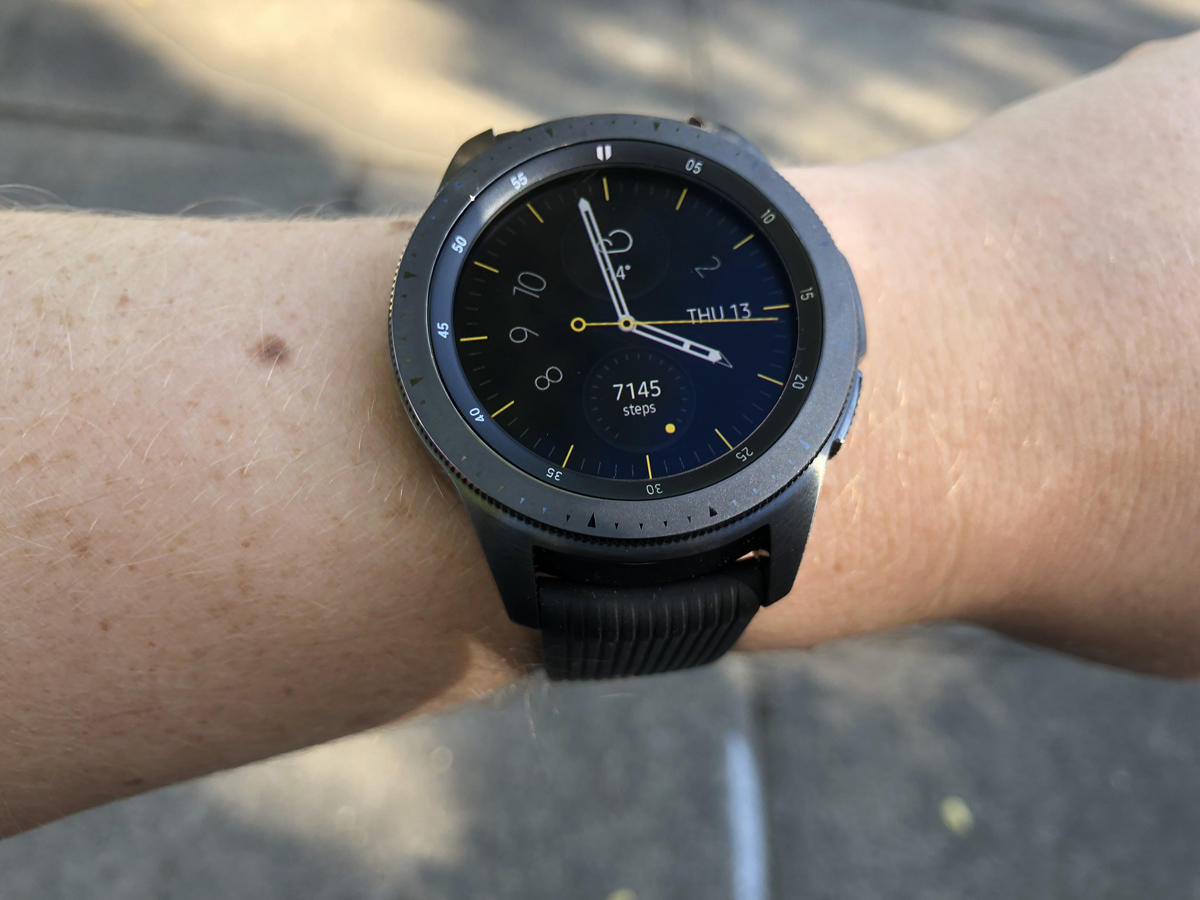
QUITE THE STUNNER
The only other difference in the sizes is that the 46mm model has a bigger battery, so it’s mostly a decision based on looks here, and it’s great to be able to have that choice. Samsung’s aim with its latest smartwatch was to create a device that looks and feels as good as a high-end analogue wrist watch with the built-in smarts to compete with the likes of the Apple Watch, and we think it straddles that line well. It has a stainless steel casing, which doesn’t feel too chunky, that’s finished off with a rotating bezel. This handy new wheel isn’t about Samsung reinventing the, erm, wheel considering past Gear devices had one, but we love it just as much this time round. That’s because it feels solid and premium, with a mechanical click as you twist it to toggle through menus and settings.
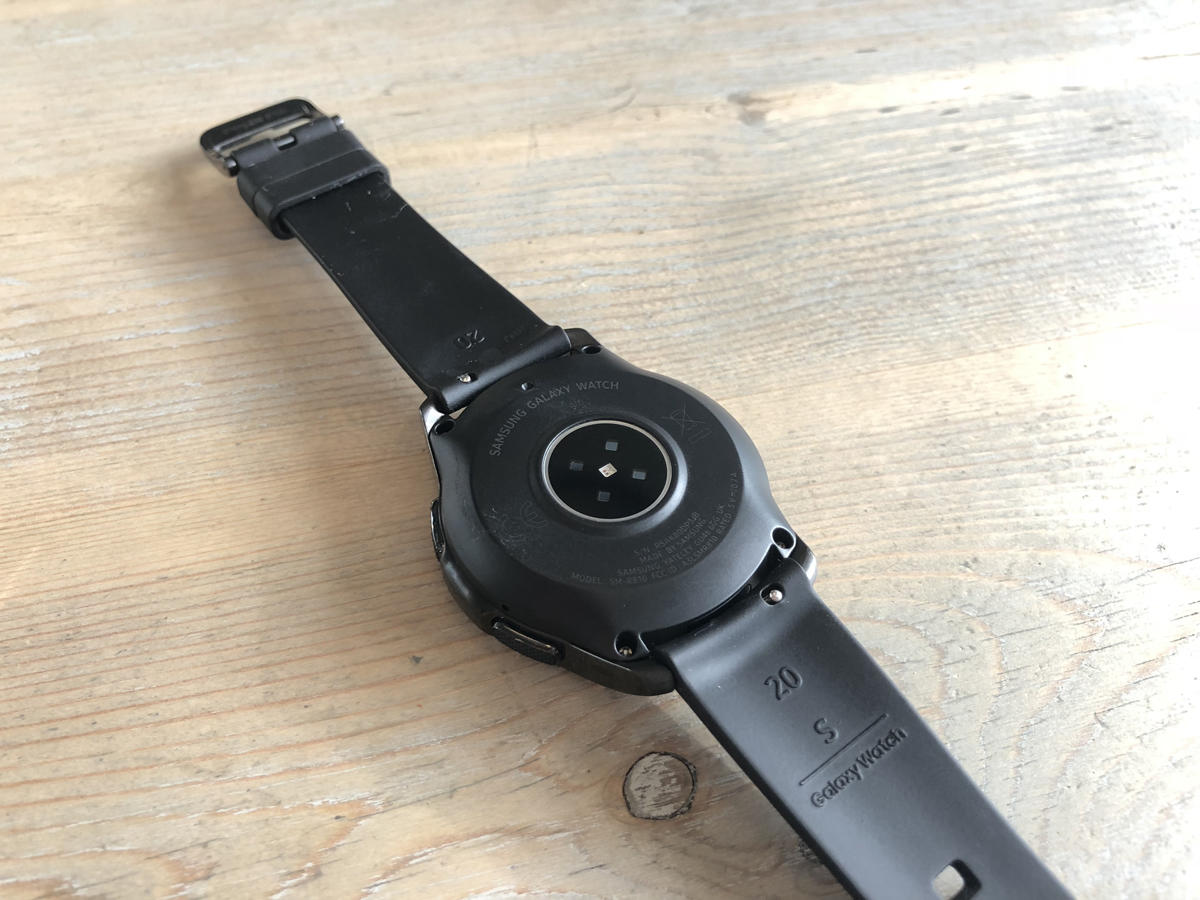
TOP-NOTCH DISPLAY
If you’ve used another smartwatch before with any other kind of navigation, the bezel may seem like it’d take some getting used to at first. However, we’ve found it’s easily the best way to navigate through the watch’s UI and becomes second nature after only a day. As well as the bezel, we also love the watch’s display. With the 46mm model you get a 1.3-inch display and the 42mm model has a 1.2-inch display. They’re both AMOLED touchscreen displays and, as you’d expect from Samsung, they’re some of the best around. They’re bright, colour rich and have an adaptive brightness setting, which worked really well for us in all kinds of lighting.
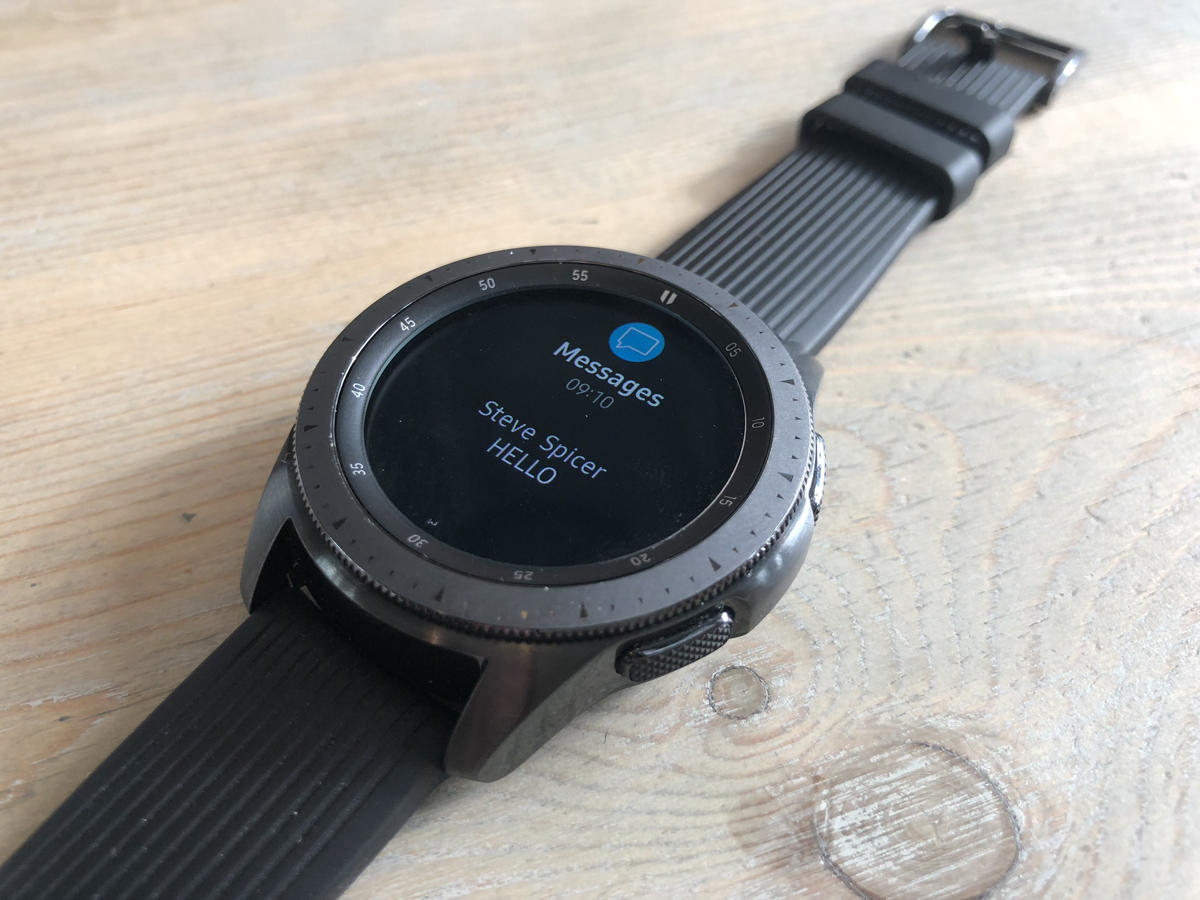
STRAPPED UP
The watch has a strap with a rubber finish, which makes it look a little sportier than previous models, as well as competing smartwatches, many of which favour a leather strap from the get-go – or at least have the option to get one. It’s also a little at odds with the Galaxy Watch’s more premium watch face. But it’s comfortable and can be easily switched out for something more formal if you do find it looks too much like a sports watch for your liking.
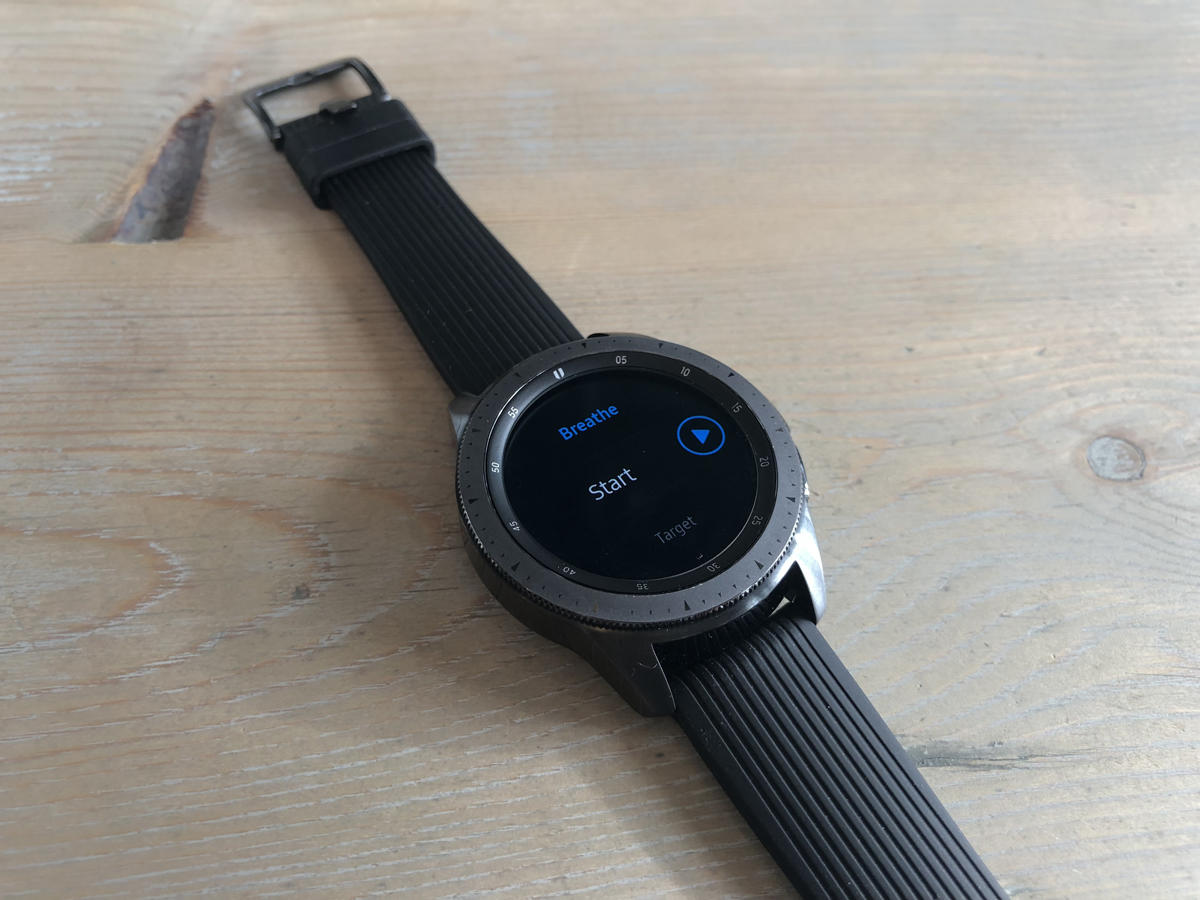
SMOOTH OPERATOR
There’s been rumblings that Samsung planned on launching its own OS for its latest smartwatch, but instead it’s gone with the Tizen operating system again. Some people might be disappointed by that, but Tizen 4.0 is one hell of a smooth operator, or, well, operating system. Its notification support is unbelievably slick, it handles fitness tracking well and has support for apps, like Spotify, again, which is awesome. Also, combined with the rotating bezel, the whole watch feels like a breeze to set-up and operate day-in and day-out.
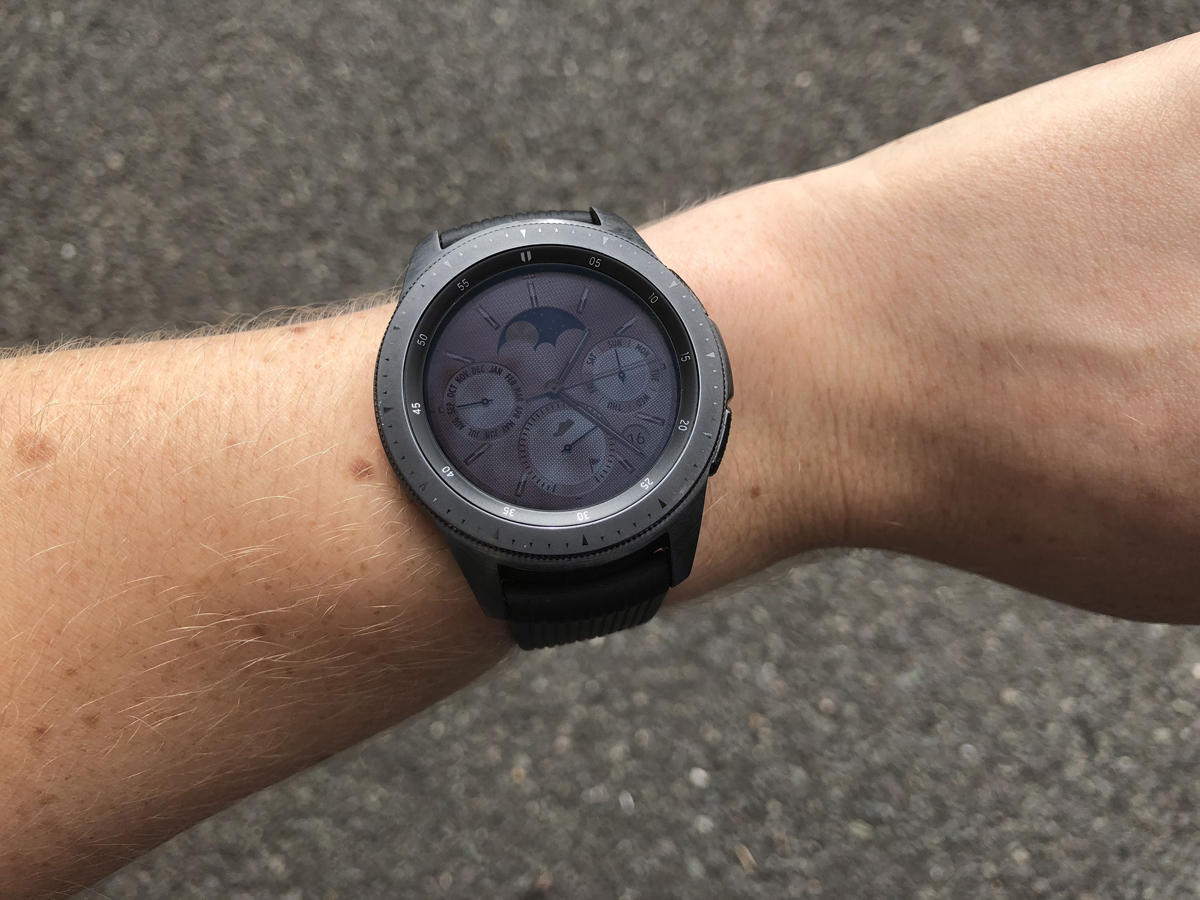
THIRD-PARTY DROUGHT
But there are some disadvantages to Tizen. For starters, it lacks third-party apps that its competitors will likely offer. What that means is relying on Bixby and Samsung’s SmartThings home control app rather than using some of the, arguably much better, options out there. Of course there are still lots of apps available, but some will lack the full functionality you’d get with an Apple Watch or a Wear OS watch. More availability might come further down the line, but this does mean the watch is geared up more to those who have already bought into the Samsung ecosystem.
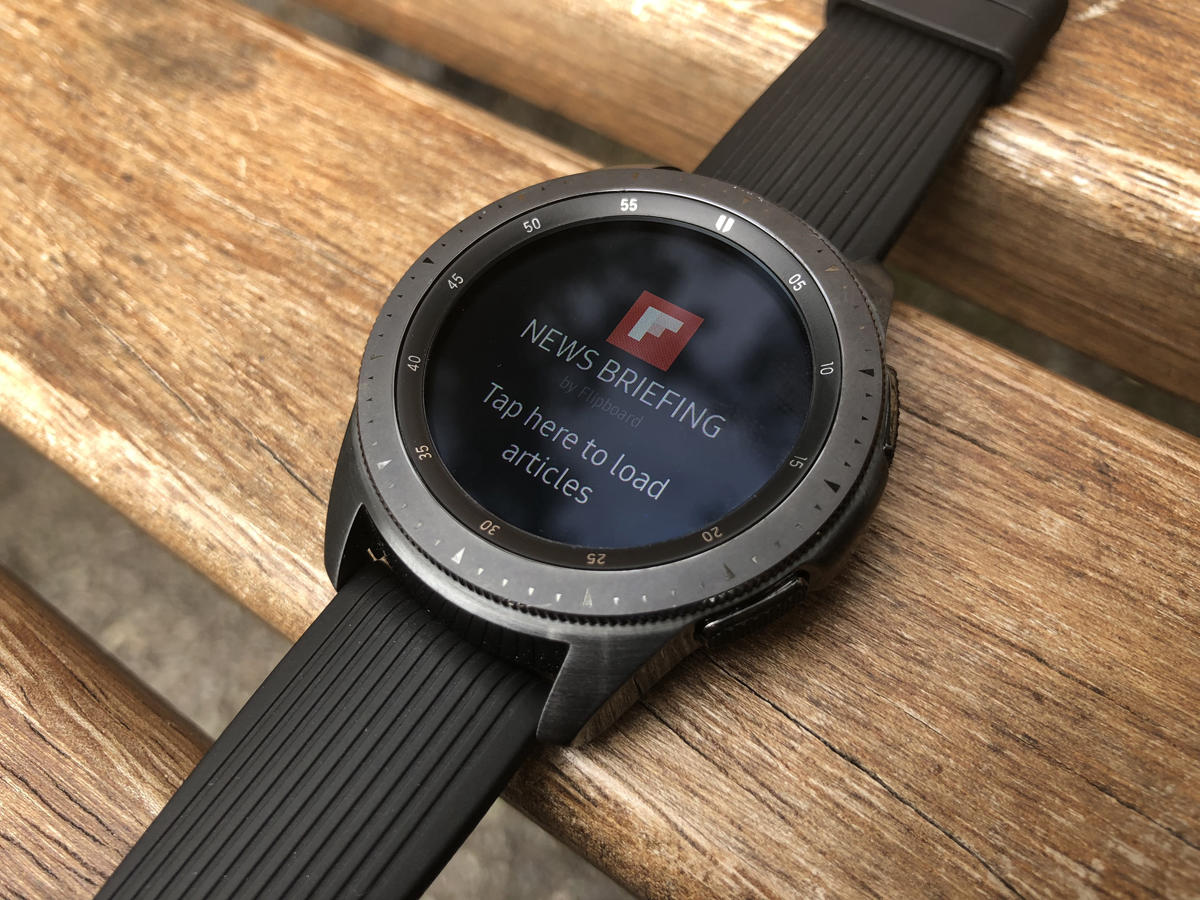
A FACE FOR EVERYONE
We’ve already explained that the bezel and Tizen OS make navigation easier, but everything about the Galaxy Watch’s user interface is a real treat to use – an intuitive one at that. There’s also a lot to customise, including widgets and settings. You can really make this watch your own in so many ways, from the faces to the settings to the straps, which is one of its key selling points for us. And when it comes to watch faces, boy is there a lot of choice. More than 60,000 choices, to be exact. Although we only tried a fraction of those, it’s clear there are plenty for all kinds of tastes, from those that are packed full of detail to minimal screens to arty, colourful ones.
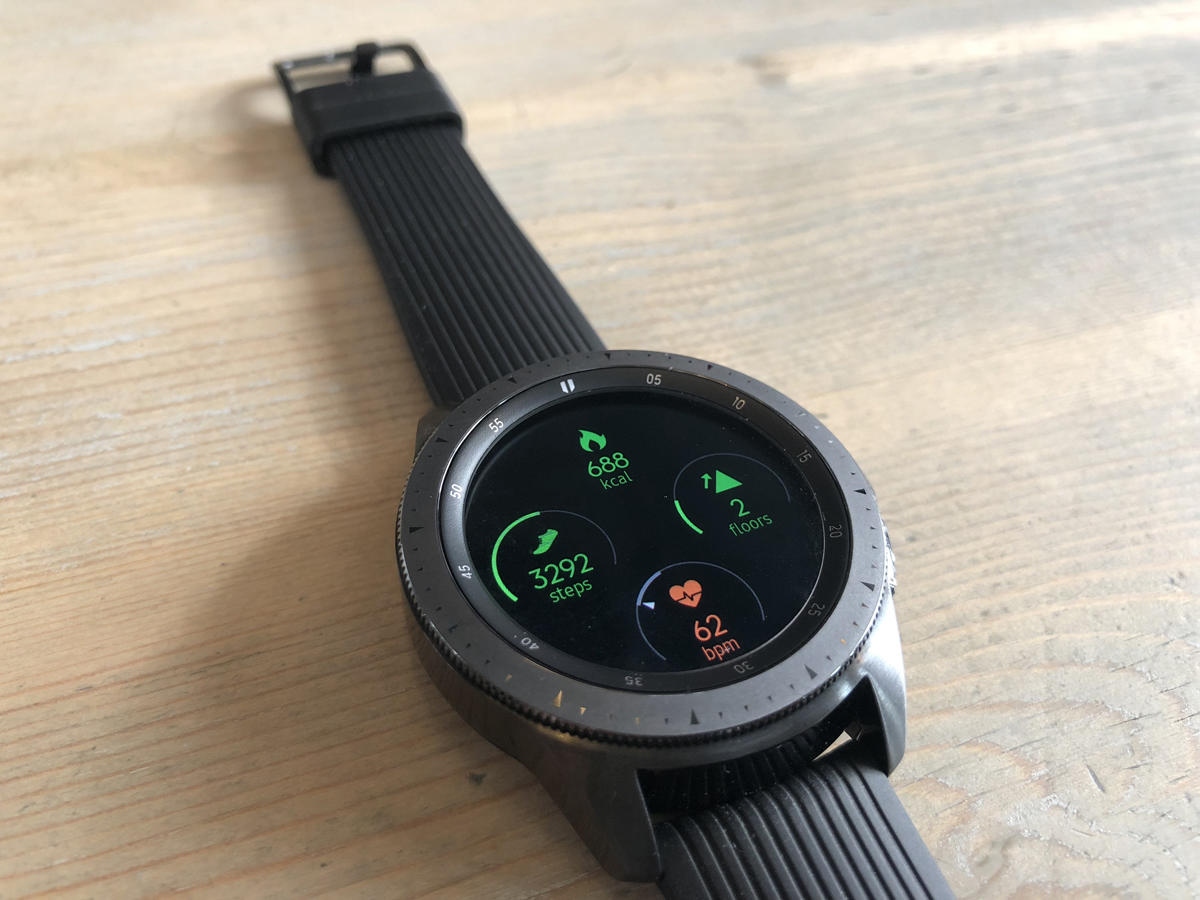
FITNESS FRIEND
As well as being a very smart smartwatch, the Galaxy Watch doubles up well as a fitness tracker. For starters, it can track the steps you’ve taken, the calories you’ve burned, the floors you’ve climbed and your resting heart rate. We compared it alongside a Fitbit Versa and found it gathered pretty similar basic health stats throughout the day. If you’re using it alongside a Samsung phone, you can also bolster this data with more about water intake, caffeine consumption, your lifestyle and your daily routine. This should all combine to create a really thorough picture of your overall wellbeing right now.
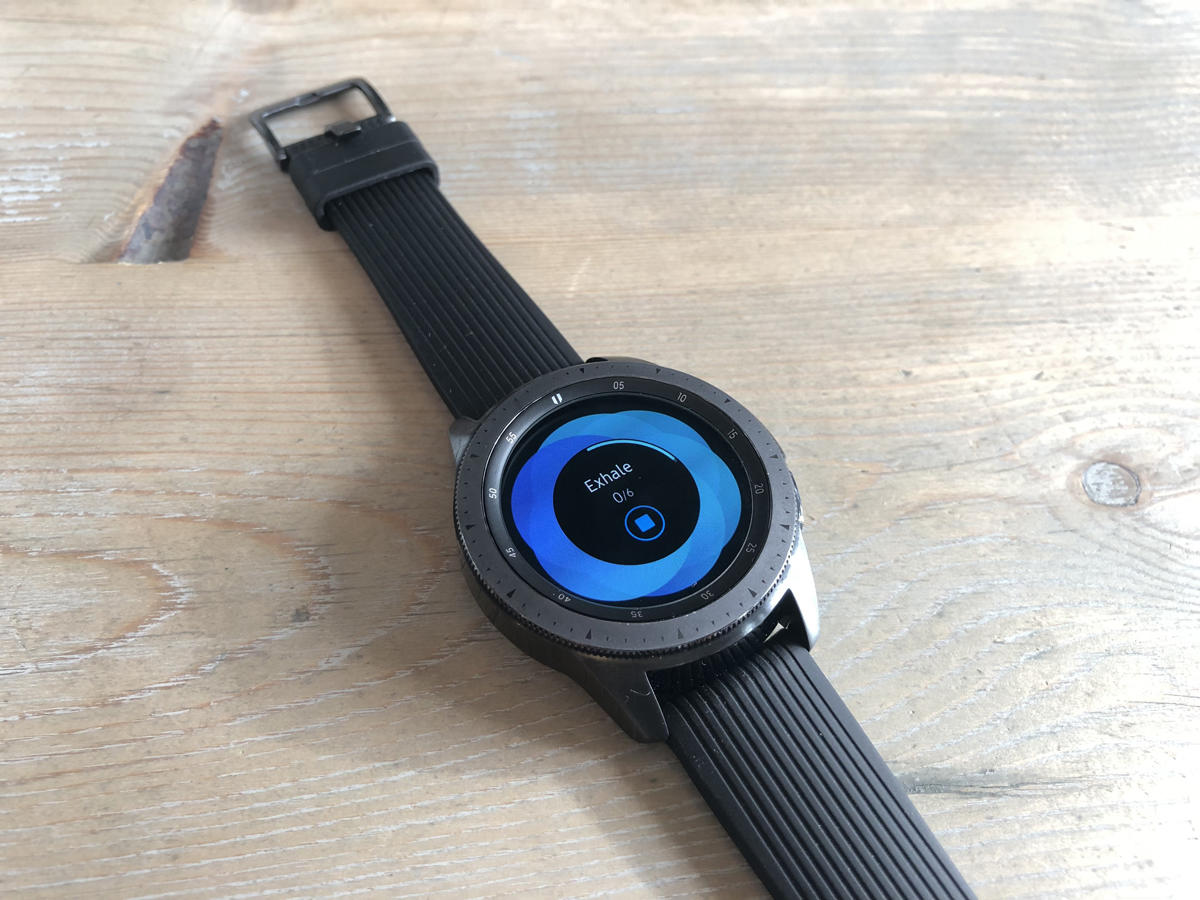
WORKIN’ OUT
It was cool to know the Galaxy Watch would kick in and start tracking my power walks instead of only using them to build up our step count for the day. The Galaxy Watch can track 39 exercises in total, including more obscure ones and more technical ones, like weight reps including shoulder press and deadlift. For keen runners, it also has built-in GPS, but you’ll need your Samsung phone nearby for that to work. It’s another feature that iPhone users won’t be able to take advantage of as it works through the Samsung Health app. But luckily you can get around that and track your runs with a third-party app instead, we’d recommend Strava, which worked fairly well and collected all kinds of running-specific data.
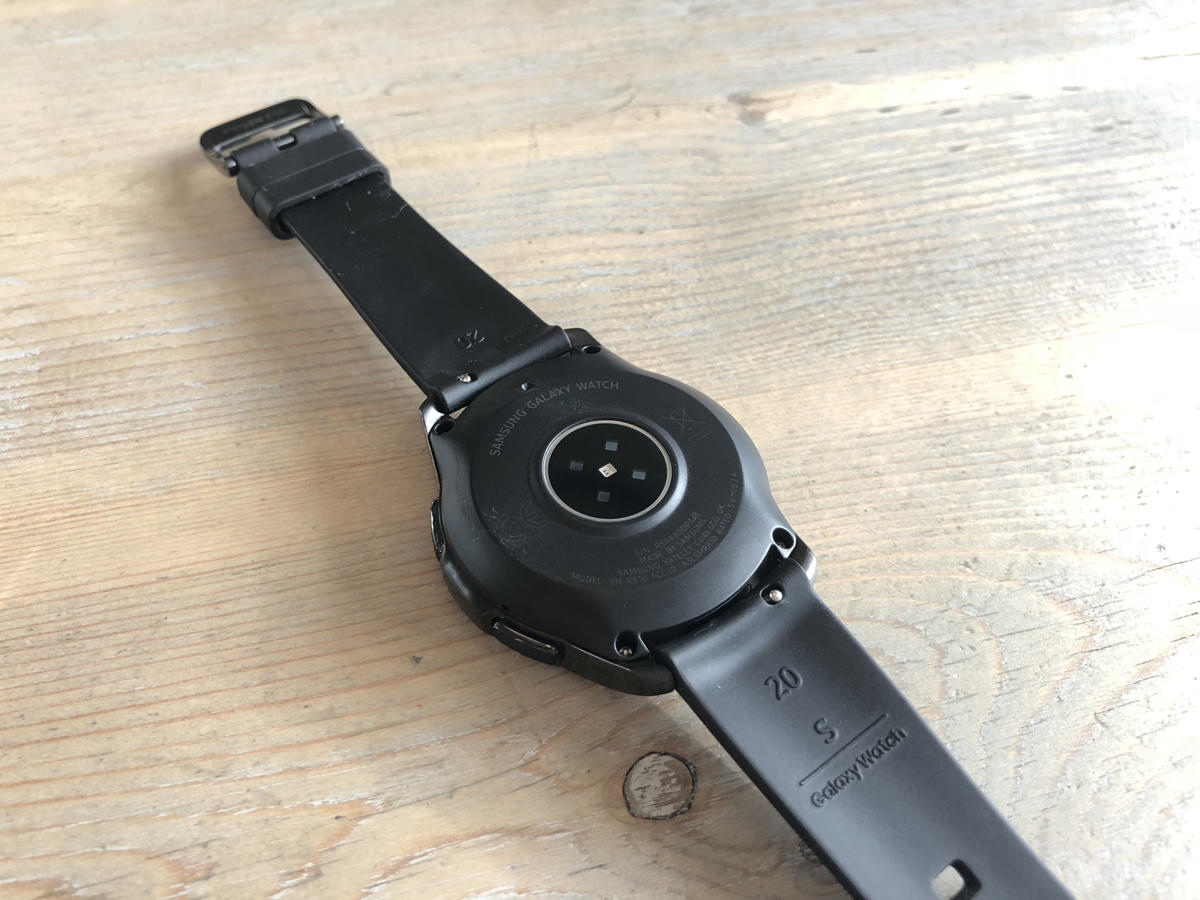
BATTERY BUDDIES
How long the battery lasts depends on which size watch you get. We reviewed the 42mm version and on paper that’s meant to last up to 5 days. We’d suspect that’s with low usage, because we made it 3 with no GPS trials in that charge, but we used plenty of other features regularly. By contrast, Samsung claims the 46mm model could last up to 7 days, but again we’d bet that’s with low usage and most other reviews have pinned that model at 4 days with regular usage. With this in mind, although we think the 42mm model is likely to suit more people, it’s worth considering the bigger, weightier model for a considerable amount more battery life.
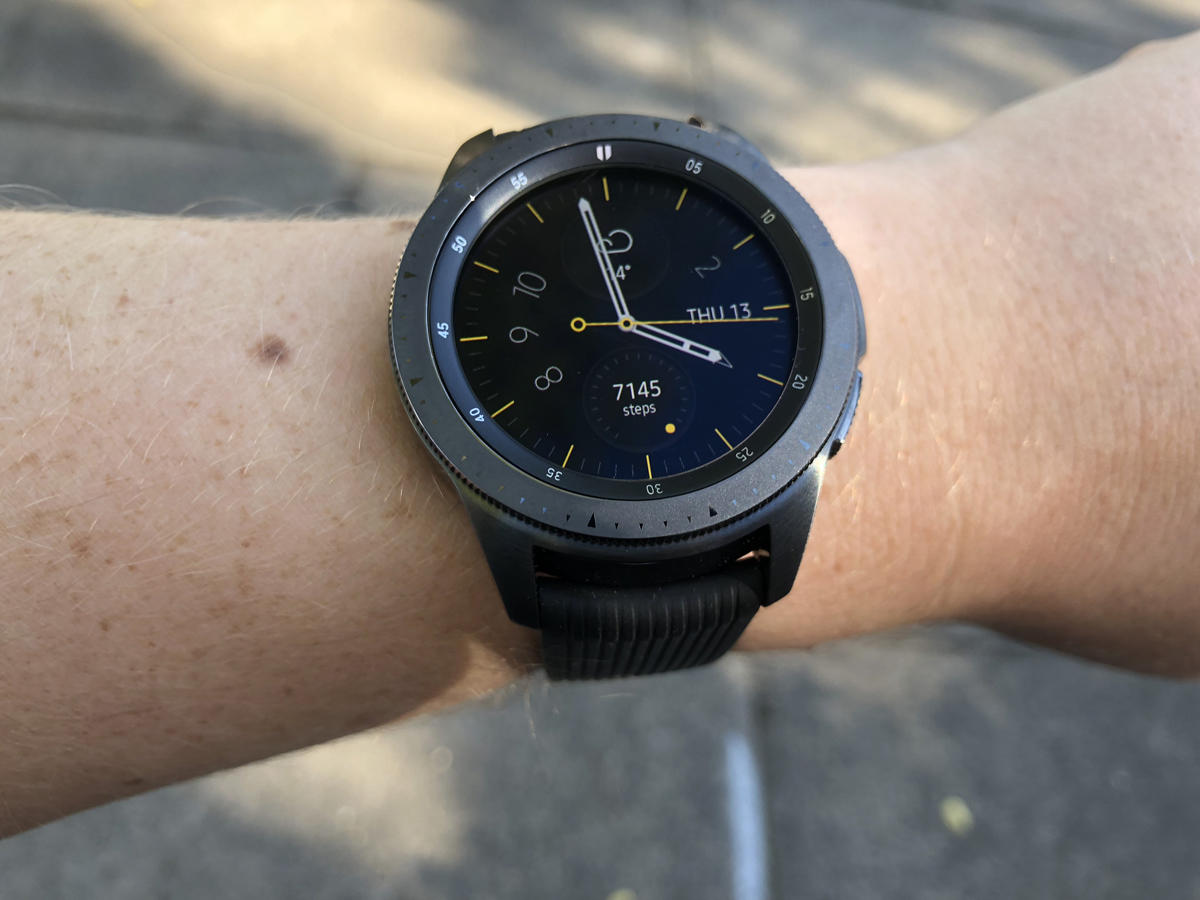
SAMSUNG GALAXY WATCH VERDICT
Whether you choose the bigger or smaller device, the Samsung Galaxy Watch is a sturdy and stylish smartwatch with plenty of power and a truly lovely user interface thanks to its rotating bezel and Tizen OS. The biggest decision you’ll have to make will likely be whether you go for the 42mm or 46mm models. Although it doesn’t seem like there’s much in it, wearing a device that’s a little too bulky or heavy for you could mean the difference between whether it’s worn 24/7 or shoved in a drawer and never looked at again.

